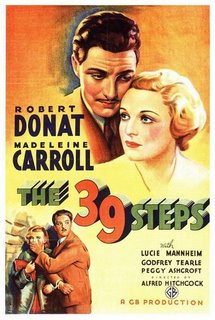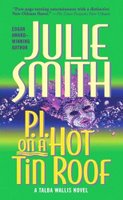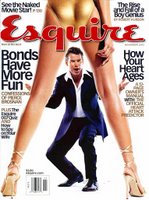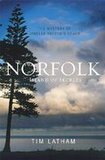 He was born Gwyllyn Samuel Newton Ford in Quebec, Canada, the only son of Welsh parents. (Ford’s father was not only a railroad executive and the nephew of former Canadian Prime Minister Sir John MacDonald, but was apparently also related to Martin Van Buren, the eighth U.S. president.) The family moved to Santa Monica, California, when Gwyllyn/Glenn was 7 years old, but it wasn’t until 1939--the same year he appeared in his first major movie role, in Heaven with a Barbed Wire Fence, that Glenn Ford became a naturalized U.S. citizen. During a career slightly interrupted by his service with the Marines in World War II, this actor with a crinkly smile and knowing eyes was featured in more than 100 films, including comedies, romances, and westerns. He appeared opposite Rita Hayworth in Gilda (1946) and starred as an idealistic teacher in the 1955 movie The Blackboard Jungle (which was based on a novel by Evan Hunter, aka crime writer Ed McBain). Ford played the father, Tom Corbett, in the 1963 film The Courtship of Eddie’s Father (a role later taken by Bill Bixby in the 1969-1972 TV series based on that movie), headlined the 1969 western Heaven with a Gun, and played young Clark Kent’s adopted father in the 1978 Christopher Reeve movie, Superman. He picked up a Golden Globe Award for his part in the 1961 Frank Capra musical comedy, A Pocketful of Miracles.
He was born Gwyllyn Samuel Newton Ford in Quebec, Canada, the only son of Welsh parents. (Ford’s father was not only a railroad executive and the nephew of former Canadian Prime Minister Sir John MacDonald, but was apparently also related to Martin Van Buren, the eighth U.S. president.) The family moved to Santa Monica, California, when Gwyllyn/Glenn was 7 years old, but it wasn’t until 1939--the same year he appeared in his first major movie role, in Heaven with a Barbed Wire Fence, that Glenn Ford became a naturalized U.S. citizen. During a career slightly interrupted by his service with the Marines in World War II, this actor with a crinkly smile and knowing eyes was featured in more than 100 films, including comedies, romances, and westerns. He appeared opposite Rita Hayworth in Gilda (1946) and starred as an idealistic teacher in the 1955 movie The Blackboard Jungle (which was based on a novel by Evan Hunter, aka crime writer Ed McBain). Ford played the father, Tom Corbett, in the 1963 film The Courtship of Eddie’s Father (a role later taken by Bill Bixby in the 1969-1972 TV series based on that movie), headlined the 1969 western Heaven with a Gun, and played young Clark Kent’s adopted father in the 1978 Christopher Reeve movie, Superman. He picked up a Golden Globe Award for his part in the 1961 Frank Capra musical comedy, A Pocketful of Miracles.However, it’s for a pair of television roles that we have the greatest cause to remember him here. In 1971, at the beginning of the so-called glory years of American TV detectives, Ford starred in the western-cum-crime drama Cade’s County, playing “Sheriff Sam Cade, whose jurisdiction,” explains Richard Meyers in his 1981 book TV Detectives, “covered all of [the fictional] Madrid County, California. The series was contemporary, but the sprawling country it pictured looked little different from the Wild West, except that instead of horses, Cade and his deputies rode Jeeps. His deputies included J.J. Jackson (veteran actor Edgar Buchanan, whose film career began in 1940, after his successful stint as a dentist), Arlo Pritchard (blond newcomer Taylor Lacher), Rudy Davillo (Victor Campos), and a production in-joke, a character known only as Pete. The joke was that this final deputy was played by Peter Ford, Glenn’s son.”
Regrettably, Cade’s County lasted only a single season. Two years later, though, Ford returned to the small screen in the pilot for an NBC-TV series called Jarrett. I was reminded of this recently, while researching a Rap Sheet post about classic-style TV private-eye shows. I have to admit, I don’t really remember much about the 1973 Jarrett teleflick, other than that Ford played an erudite and pretty sophisticated private investigator, Sam Jarrett, who specialized in fine arts cases. The plot found Jarrett facing off against a phony holy man, while trying to locate some missing rare Biblical scrolls. That movie seemed to have lots of things going for it: its script was written by Richard Maibaum (who penned the screenplays for many of the James Bond films) and its director’s chair was occupied by Barry Shear (who was behind the camera for a number of prominent 1960s and ’70s TV series, including The Man from U.N.C.L.E., Alias Smith and Jones, and Police Woman). Yet it couldn’t seem to find a slot in that fall’s TV schedule, perhaps because, as Maibaum allegedly suggested, the lead role had been intended for a younger, more athletic actor than the middle-aged Ford.
In 1974, Ford appeared in another unsuccessful TV pilot, Punch and Jody (also directed by Shear), in which he played a father who, after abandoning his wife and daughter in order to join a traveling circus, tries to reconcile with the child he left behind. His second and last venture into the world of weekly TV dramas came in The Family Holvak (1975), a Waltons-like show that placed Ford in the role of a 1930s Tennessee reverend who struggles to keep his brood and his community out of trouble. (Child actor Lance Kerwin, who later starred in James at 15, played Ford’s son in the series.)
Glenn Ford was wed four times, all of his marriages ending in divorce. However, with his first wife, actress-dancer Eleanor Powell, he produced the aforementioned son, Peter Ford (now 61), who evidently has a biography of his father, Glenn Ford: A Life in Film, “coming soon” from Terrace Books, a division of the University of Wisconsin Press. It’ll be interesting to see whether there’s anything new in that book about Jarrett, Cade’s County, or other crime-related series projects attached to this actor’s name.
READ MORE: “Glenn Ford, Canadian-born American Actor, Died at 90” (Dead Famous).




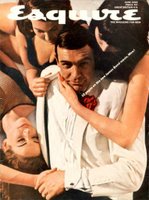


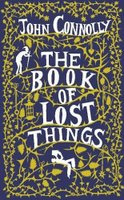 The piece itself
The piece itself